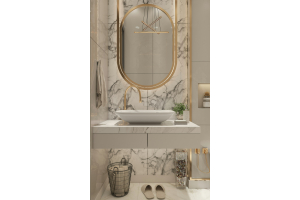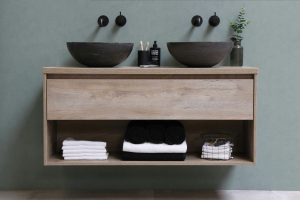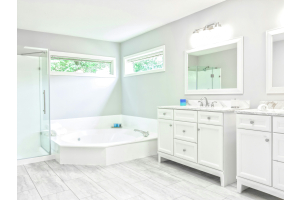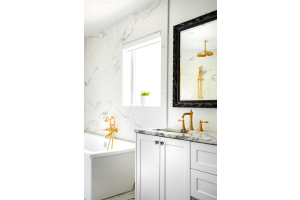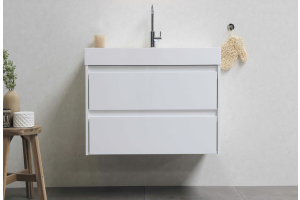Purchasing interior doors with glass inserts is an ideal decor solution for homeowners looking to enhance the natural light in their properties, with the option of closing connecting doors for privacy, heat retention, and to contain noise.
Why do doors have glass panels? The core benefit of a glazed door is that it boosts the ambiance of a property, opening up darker rooms, corridors, and spaces that would otherwise feel dim and unwelcoming.
Today, we'll explain how to replace a glass panel in your door that becomes broken. While this is a highly unlikely scenario with a premium, solid wood door from 27estore, it always helps to be prepared!
How Do Glass Door Panels Become Broken?
Our selection of doors with statement glass panels is engineered for longevity and safety, with tempered, laminated glass that can withstand impacts and force. These panes of glass are double-layered and suitable for use in a family home.
The most common reasons you might need to replace a glass panel include:
- Damage caused to the door during transport or installation
- Impacts to the frame or timber that impact the stability of the glazing frame
- Needing to upgrade low-security or single-glazed glass in an existing door
- Switching clear glass for opaque or decorative glass panels
Are front doors with glass safe? Provided you purchase a door with the same high-quality glazing or replace single-glazed glass in an older door, this type of entrance is perfectly safe. Toughened, dual-layered glass doesn’t shatter or splinter when under extreme pressure and instead breaks into a 'web' of pieces in much the same way as a car windscreen.
Can I Replace the Glass in an Interior Door Myself?
You can replace a glass pane if you have the appropriate tools and experience. However, it is highly advisable you have somebody to assist, particularly if your door has a larger feature panel, which can be heavy and difficult to maneuver into position without an extra pair of hands.
Where the glass in a door has broken easily–normally because the door has warped with age or older glass has become brittle–it may be worth replacing the whole door rather than taking any risks that even superb quality glass will be exposed to further breakages due to weaknesses in the door structure.
Doors with single glazing may not be suitable for a replacement panel if the molding inside the door isn't wide enough to hold a double glass panel or is worn or uneven. Otherwise, replacing the glass may be considerably more cost-effective if the door remains in pristine condition, the frame and fixings are stable and even, and you are happy with the finish and appearance of your door.
How to Replace a Glass Panel in a Door
The below step-by-step instructions are based on a standard glazing panel that has been cut accurately to the size of your door. Please note that if you need to replace larger-scale glazing in bi-fold or patio doors, you may need to hire a professional to assist.
Equipment Needed to Replace a Pane of Glass
You will need a putty knife, scraper, and chisel. In addition, we’d suggest wearing safety glasses and gloves. Depending on whether there is any damage to the door, you may require paint, primer, and brushes to repair the door's finish once the glass has been fitted.
Glazing experts recommend having a glass panel very slightly smaller than the measurements between the moldings. The glass will then have plenty of room to expand, which happens naturally in warm interiors.
Preparing a Door for Replacement Glass
Any broken or damaged glass should be removed. If you’re replacing shattered safety glass, a handy tip is to use tape to hold the pieces together, removing the panel in one piece from the frame.
Next, you will need to lever the molding away from the door gently–you need enough room to insert the new glass, but you should be cautious not to break it. If there is any residual putty or caulk from the previous panel, you should remove this using a scraper or chisel.
Inserting a Glass Panel in a Door
When the molding is accessible, you can insert the panel and then replace the molding inside the edging space. Add caulk around the edges and firmly press down, wiping away any excess before it sets.
Alternatively, you can apply a glazing compound using a putty knife, depending on how the original glass was fitted, taking the same steps to remove the excess quickly. Once the putty or caulk is fully cured, you can paint any areas of the door that have become damaged, and your newly refurbished door will be ready to use.

